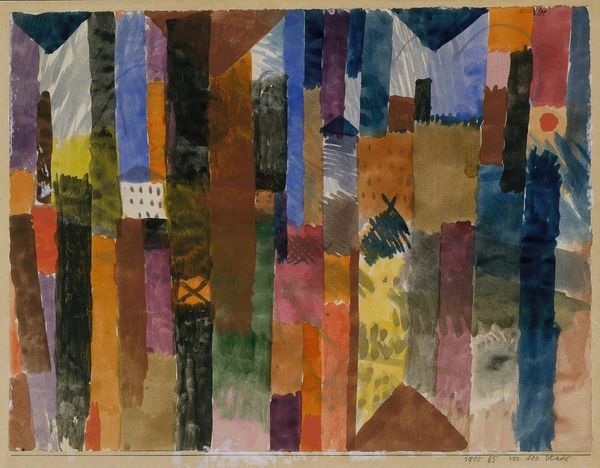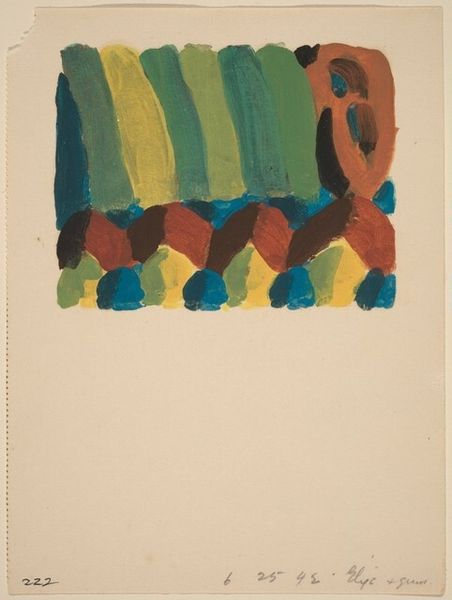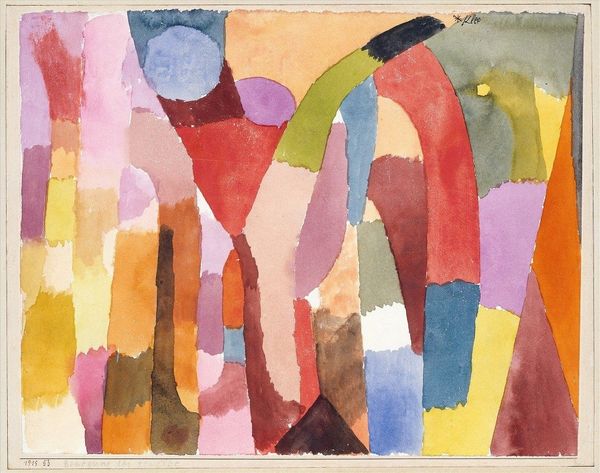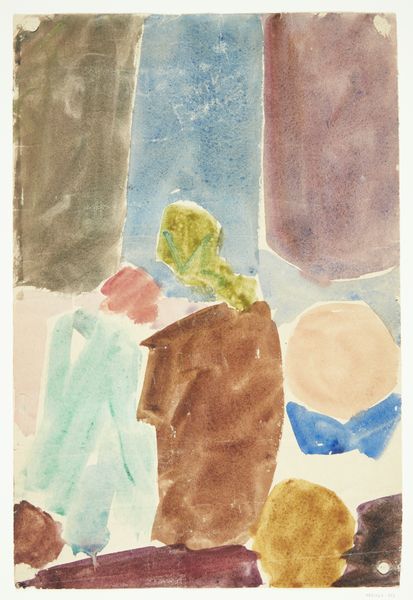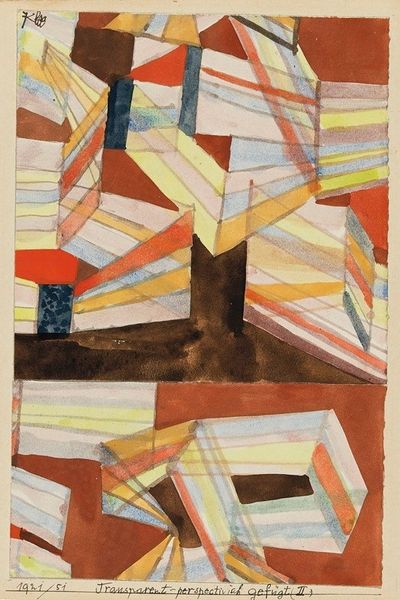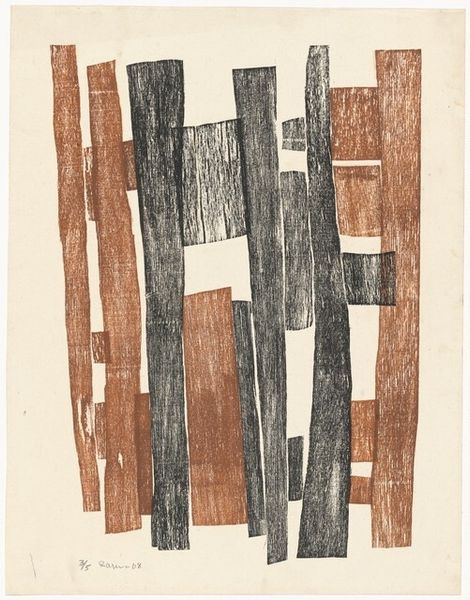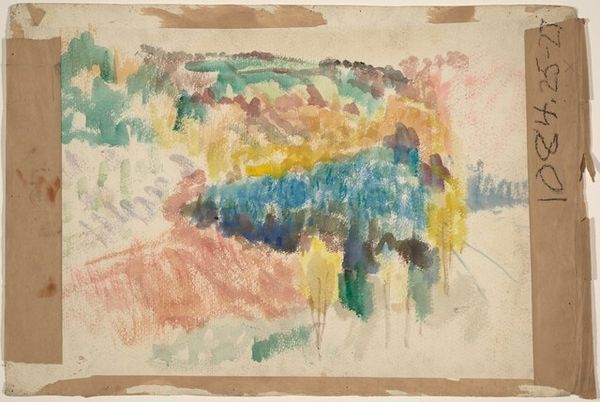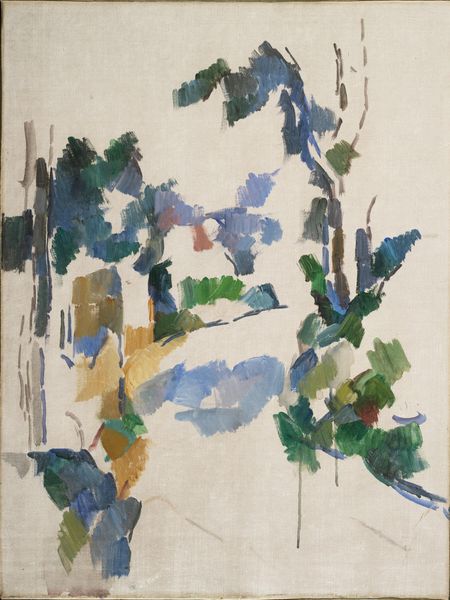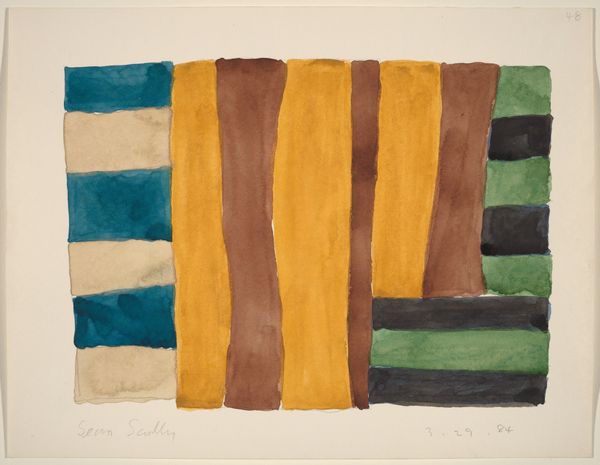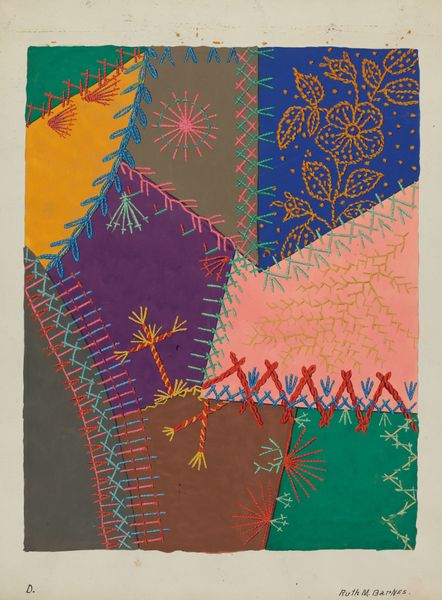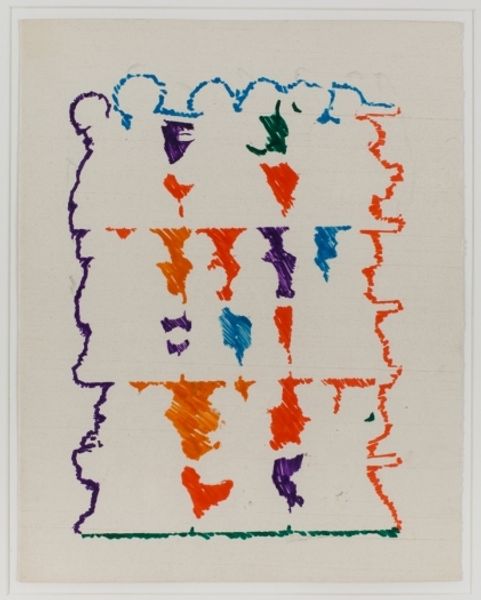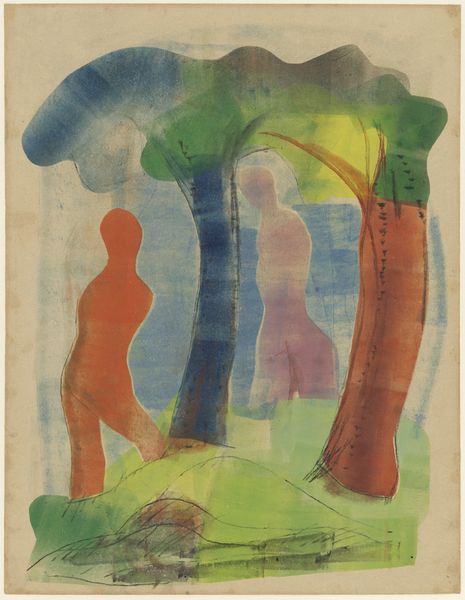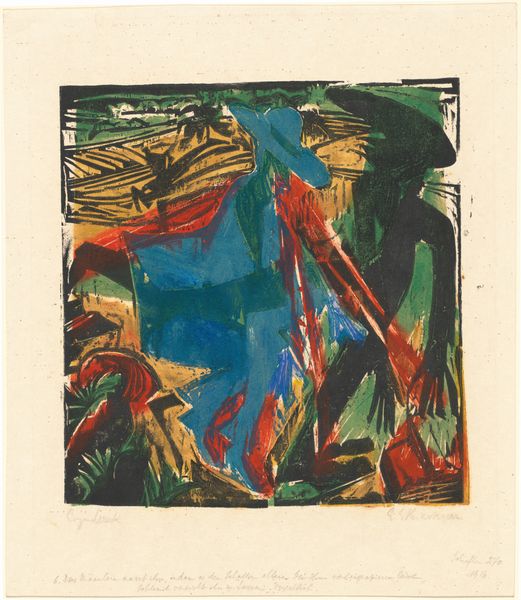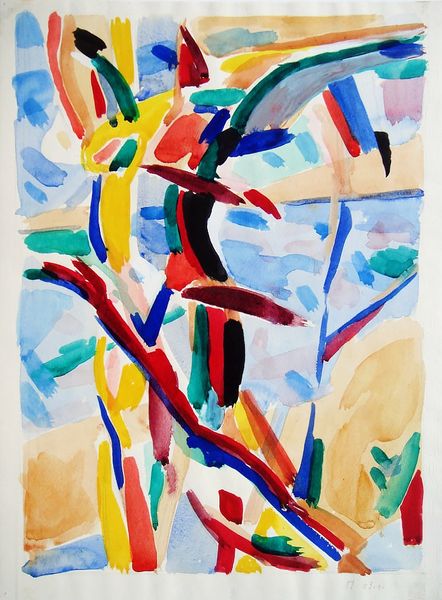
drawing, painting, watercolor
#
tree
#
drawing
#
painting
#
landscape
#
watercolor
#
forest
#
geometric
#
expressionism
#
abstraction
#
watercolour bleed
#
watercolor
Copyright: Public Domain
Paul Klee made this watercolor painting, Tannenwald, whose title translates as 'fir forest,' using gentle colors and simple shapes. The painting shows how artmaking can be a process of invention. Klee was super interested in the materiality of his paints and paper. In this piece, you can see how he's carefully layered his watercolors, letting the colors bleed and mix in unpredictable ways. Look at the bottom of the painting. The brown and reddish hues feel earthy, and the way he's dabbed the paint creates a sense of texture like you might find on the forest floor. The stripes of color create a sense of rhythm, and also a sense of something hidden. Klee was into music, right? Maybe he wanted to make a painting that felt like a song. I love how he doesn't give us all the answers. Like the work of another watercolorist, someone like, say, Emil Nolde, there's always more to discover, more to feel. It's like the painting is constantly changing, depending on how you look at it.
Comments
stadelmuseum about 2 years ago
⋮
The rich palette of this watercolour resounds with the artist’s experience of a trip to Africa in April 1914. Here Klee has translated the trunks and branches into a weave of colour zones, rectangles, and short strokes. The variety of forms, but also the juxtaposition of harmonious and contrasting hues sets the scene in motion. Like Robert Delaunay, Klee regarded nature as an ongoing process. His ‘Fir Forest’ watercolour accordingly does not provide us with a depiction of nature’s outward appearance but points instead to its underlying laws.
Join the conversation
Join millions of artists and users on Artera today and experience the ultimate creative platform.
